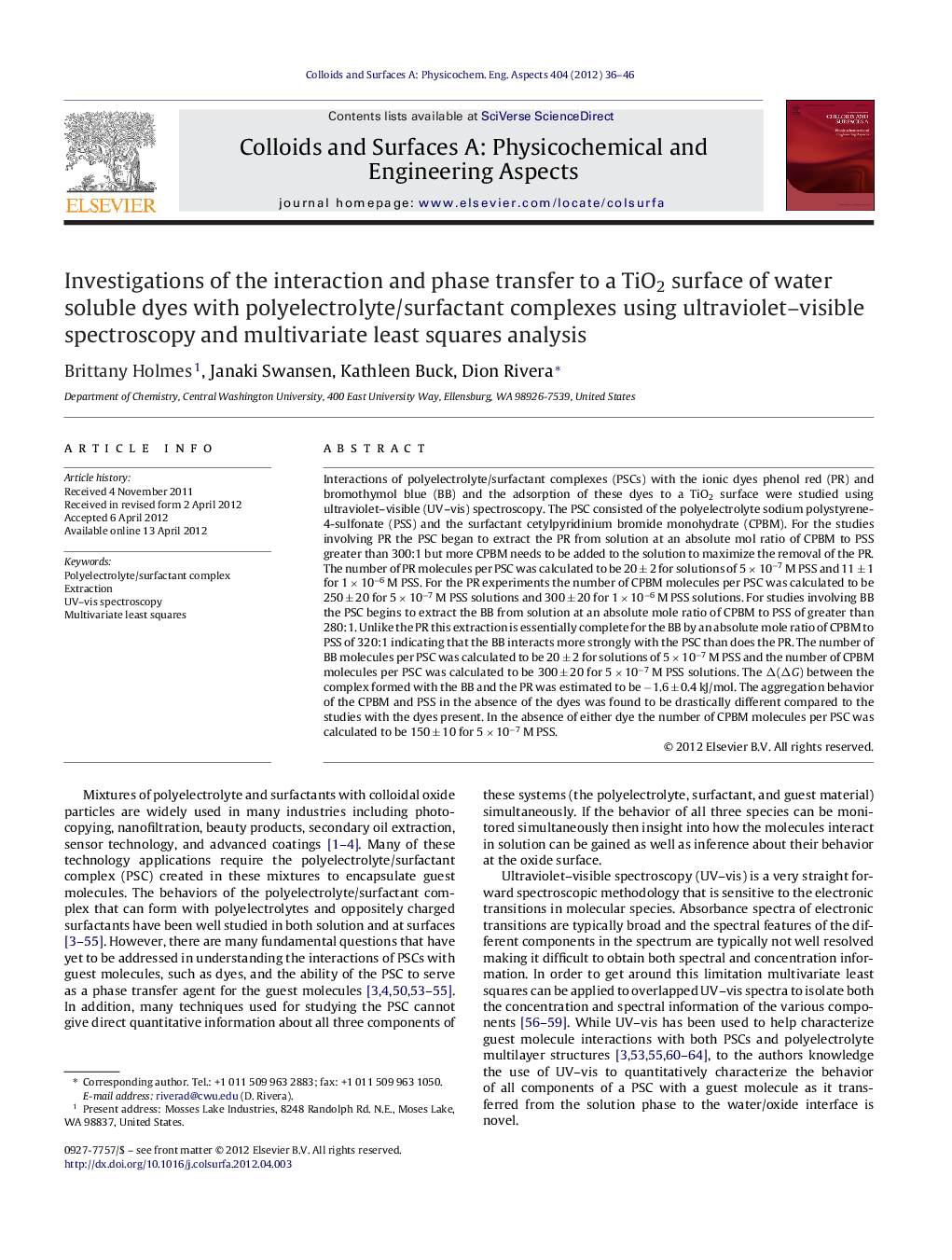| کد مقاله | کد نشریه | سال انتشار | مقاله انگلیسی | نسخه تمام متن |
|---|---|---|---|---|
| 594107 | 1453969 | 2012 | 11 صفحه PDF | دانلود رایگان |

Interactions of polyelectrolyte/surfactant complexes (PSCs) with the ionic dyes phenol red (PR) and bromothymol blue (BB) and the adsorption of these dyes to a TiO2 surface were studied using ultraviolet–visible (UV–vis) spectroscopy. The PSC consisted of the polyelectrolyte sodium polystyrene-4-sulfonate (PSS) and the surfactant cetylpyridinium bromide monohydrate (CPBM). For the studies involving PR the PSC began to extract the PR from solution at an absolute mol ratio of CPBM to PSS greater than 300:1 but more CPBM needs to be added to the solution to maximize the removal of the PR. The number of PR molecules per PSC was calculated to be 20 ± 2 for solutions of 5 × 10−7 M PSS and 11 ± 1 for 1 × 10−6 M PSS. For the PR experiments the number of CPBM molecules per PSC was calculated to be 250 ± 20 for 5 × 10−7 M PSS solutions and 300 ± 20 for 1 × 10−6 M PSS solutions. For studies involving BB the PSC begins to extract the BB from solution at an absolute mole ratio of CPBM to PSS of greater than 280:1. Unlike the PR this extraction is essentially complete for the BB by an absolute mole ratio of CPBM to PSS of 320:1 indicating that the BB interacts more strongly with the PSC than does the PR. The number of BB molecules per PSC was calculated to be 20 ± 2 for solutions of 5 × 10−7 M PSS and the number of CPBM molecules per PSC was calculated to be 300 ± 20 for 5 × 10−7 M PSS solutions. The Δ(ΔG) between the complex formed with the BB and the PR was estimated to be −1.6 ± 0.4 kJ/mol. The aggregation behavior of the CPBM and PSS in the absence of the dyes was found to be drastically different compared to the studies with the dyes present. In the absence of either dye the number of CPBM molecules per PSC was calculated to be 150 ± 10 for 5 × 10−7 M PSS.
Figure optionsDownload as PowerPoint slideHighlights
► Unique quantitative spectroscopic methodology presented.
► Polyelectrolyte/surfactant complex adsorption behavior altered with dyes.
► Polyelectrolyte/surfactant complex rearrangement after absorption to TiO2.
► Similar dyes have different interactions with the polyelectrolyte/surfactant complex.
Journal: Colloids and Surfaces A: Physicochemical and Engineering Aspects - Volume 404, 20 June 2012, Pages 36–46